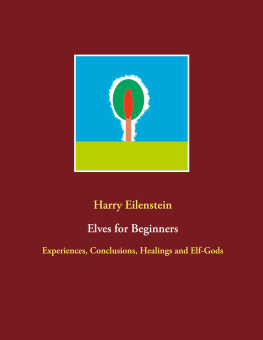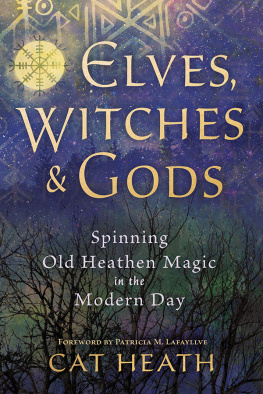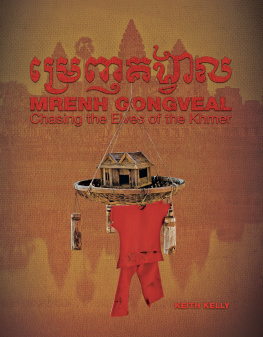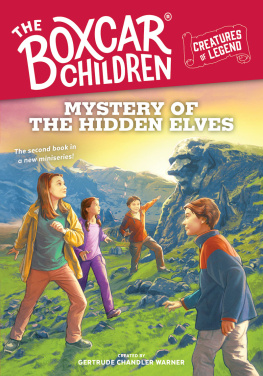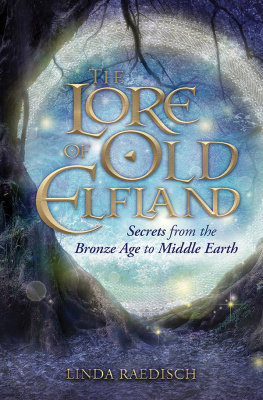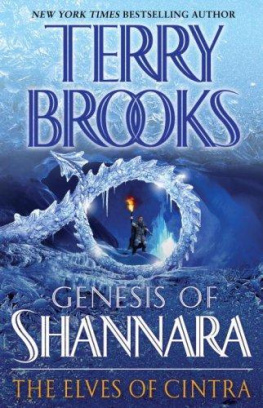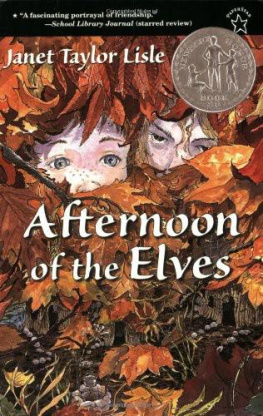Contact: www.HarryEilenstein.de
Harry Eilenstein at youtube
Imprint: Copyright: 2011 by Harry Eilenstein All rights reserved, including but not limited to that of translation. No part of this book may be reproduced, translated, stored in a retrieval system, or transmitted in any form or by any means, electronic, mechanical, photocopying, recording, or otherwise, without the prior written permission of the author and the publisher.
Production and publishing house: Books on Demand GmbH, Norderstedt
ISBN: 9783753437231
Table of Contents
I Elves?
What do elves have to do with serious magic? These lovely flower spirits from romantic stories and from fairy tales are not exactly what most magicians care about seriously and in detail and hardly any other sensible person either.
The usual depiction of elves are small children or young women with butterfly wings such beings do not seem to be a part of reality
After all, the known elf depictions from the books of Cicely Mary Barker are very much based on the appearance of the respective plants, so that the elves appear as humanoid variants of the plants in question, so to speak.
But maybe a grain of truth can be found in the imaginative representations in the myths, legends and fairy tales. Let's see
II The history of the elves
II 1. The word "elves"
It is almost always helpful to look at the history of the name and designation of a thing, if one wants to understand it better.
The word "Elves, Alben, Alfen, Elfen, Elben" comes from the Old Norse alb and describes there a group of spirits. The word itself is related to the Latin "albus" for "bright, white".
With these Albs the spirits of the dead are meant, as among other things the title "Alberich" ("king of albs") of the former North Germanic sungod, fathergod and god of the dead Tyr shows. This interpretation is also confirmed by the fact that the albs live in hills these are the barrows where the dead rest.
The designation of the spirits of the dead as "white" or "bright" has two reasons: on the one hand, spirits of the dead can be perceived clairvoyantly as milky-white shadows with a slight blue shimmer, and on the other hand, the afterlife of the Germanic peoples lay in one of their afterlife concepts up in the sky in the bright ("white"), golden hall of the sungod-godfather Tyr. Therefore also Tyr himself was called "the white god".
However, since the Germanic tribes also had the burial chamber in the barrow and the simple burial in the earth, the albs began to be distinguished according to their place of residence as the "light albs" above in the sky and the dark albs" in the barrows.
II 2. Light elves and dark elves
From this distinction according to the place of residence of the ancestral spirits, which originated with the Germanic tribes, J.R.R. Tolkien created the Elves (light elves) and the Orcs (dark elves). Tolkien, who had been a professor of English at Oxford and had studied Germanic mythology intensively, brought the flower elf image, which was common in his time, back somewhat closer to the original Germanic image.
Tolkien's drastic-romantic depictions of the elves are rooted in his horoscope: He had a conjunction of Pluto ("drastic") and Neptune ("romantic") in the first house of his horoscope.
II 3. Plant elves
The spirits in the barrows have already become "spirits on the barrows" among the Teutons especially the sungod-godfather Tyr, reborn in the morning, sits on his barrow.
These "spirits on the barrows" have apparently become associated with the "plants on the barrows".
In the Germanic mythology also the first two humans were created from trees, thus from plants and humans were very often described by the Teutons and also by the Celts as "beech of the sword" (man), "birch of the collar" (woman) and similar.
Probably by these associations then in the course of time the motive of the plant spirits developed.
Among the Teutons themselves the plant elf motif is still unknown.
II 4. Erotic elves
The common erotic-feminine representation of the elves shows another root of this motif: In the Germanic myths, the earth and afterlife goddess unites with the dead man in the barrow, so that the dead man can beget himself, whereupon the goddess then gives birth to the dead man nine months later the barrow is the belly of the earth goddess, who is pregnant with the re-begotten dead man. The seducing elves, who are almost always female, are the earth and afterlife goddess as the beautiful reconception mistress of the dead.
Since the dead in their burial mounds were imagined as snakes and dragons, after all sorts of reinterpretations, the motif of the hero (dead man) developed, who climbs into a cave (burial chamber in the burial mound), kills the dragon (spirit of the dead) and frees the fair maiden (goddess of the afterlife) and then unites with her (reconception).
II 5. Fantasy images
Since these elf-imaginings are only the result of associations and not of experiences, experiments, observations and conclusions, they are a pure fiction, nothing else than a figment of human imagination nowadays mainly an idealizing, romantic and partly very sweet and erotic image of seductive young women with butterfly wings.
III Research on Elves
III 1. Research principles
In view of this mythological-fantastic origin of today's elf conceptions, taking the elves seriously looks almost ridiculous unless one sees them simply as reinterpreted and misunderstood ancestral spirits.
However, the conclusion that no conception whose origin can be explained from mythological images can have a reality content is somewhat rash. With this argumentation one could also reject the reincarnation, because this originated from the cycle of agriculture with the sowing, the growing, the harvest and the reseeding of the grain.
If one really wants to be sure (which is generally preferable to hasty conclusions), one must examine the thing itself about which one wants to know something and not only the history of the ideas connected with this thing.
III 2. A Working Hypothesis
Every verification needs a working hypothesis, and every experiment needs an approach from which to design an experimental setup. This approach can be very complex or very simple depending on whether there are already experiences, ideas and procedures that can be applied to the case at hand.
If one asks the question whether elves exist or not, one comes one step further, if one asks oneself first of all, by what one would recognize an elf as real. The most important characteristic a flower spirit would have to have in order to be called such would be a consciousness and an individuality.
How can this be proven? One can, of course, make dream journeys to various plants and will find that one can talk to them but is that a sure proof that there is a plant consciousness? It is first of all only the proof that one can receive information about plants with the help of dream journeys and then experience these internally as pictures and conversations and possibly also that this information can be very helpful.
III 3. Plant telepathy
So one has to go back one step further with the question: How would I know that a plant has a consciousness?
This question is not easy to answer but since I have already done experiments on it, I know fortunately which approach has been successful in the end. Asking a good question is generally already half the answer
Next page
